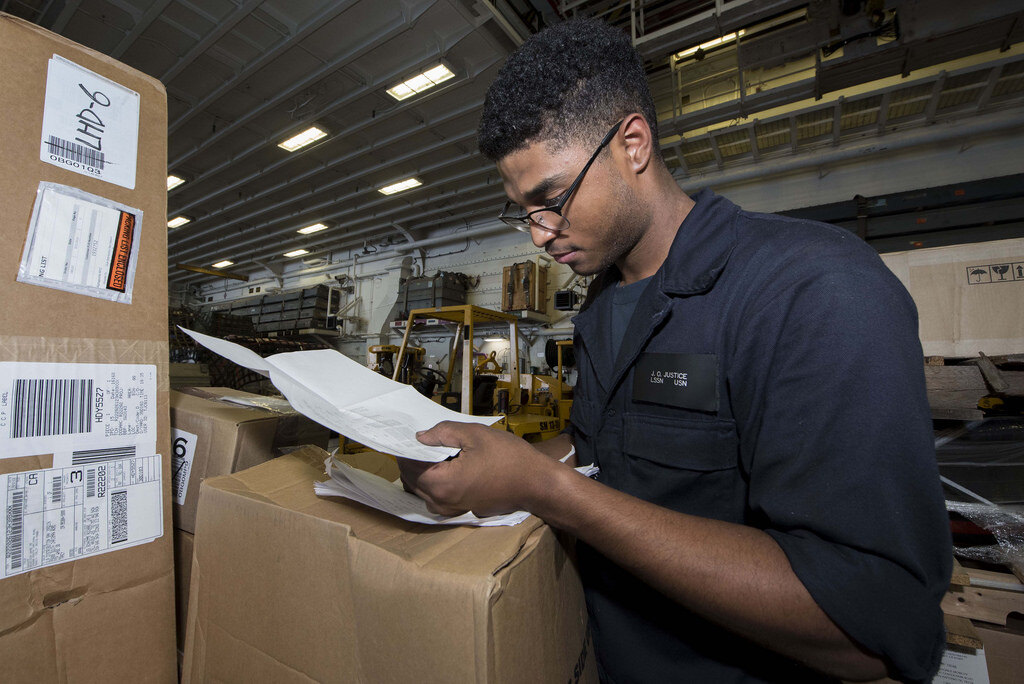10 Ways to Make Parts Inventory Easier at Your Fleet Operation

By Mary Gerard, Content Marketing Manager
When Island Transit in Coupeville, Wash., used to take parts inventory of the more than 8,000 parts needed for its full-service garage, it took two staff members about 14 days to complete the process.
Needing to make a change to save time and labor, they began using barcoding tools. These connected directly to their fleet management software, allowing them to quickly create barcodes for parts and scan them with barcoding tools.
The result was astonishing. Four to five staff members were able to complete parts inventory in just one day – trimming 13 days from their process.
“I don’t know why everyone isn’t using (the barcoding tool),” said Ken Riley, Maintenance and Facility Manager at Island Transit. “It pays for itself by saving labor.”
Using barcoding tools was an effective way for Island Transit to improve its parts inventory process. There are also other ways, including the following:
- Use Fleet Management Software: You can streamline your parts inventory processes by using an FMIS. This allows operations to track parts, quickly reorder items, efficiently monitor parts inventory, manage purchase orders and vendors, and more.
- Categorize and Label Parts: Organize parts into categories and label them appropriately. This will make it easier for staff members and technicians to locate specific parts when needed, and make the parts inventory process easier.
- Take Inventory Regularly: Take inventory regularly to ensure the parts count is accurate. This helps identify discrepancies, prevents being out of stock or overstocking, and maintains optimal inventory levels.
- Set Minimum and Maximum Stock Levels: Determine minimum and maximum stock levels for each part based on demand and usage patterns. This helps prevent being out of stock when parts are needed, and overstocking of the less used parts. This will help optimize inventory levels and reduce carrying costs.
- Establish Reorder Triggers: Using an FMIS, you can set up automatic reorder triggers in the software to automatically alert the parts staff when parts need to be reordered based on stock. This ensures timely replenishment of parts and helps maintain a consistent supply, minimizing downtime due to parts unavailability.
- Manage Vendors: Establishing strong relationships with reliable parts vendors and making keeping parts in stock – at a fair price – easier. You should regularly evaluate their performance, negotiate favorable terms, and ensure timely deliveries to minimize disruptions in the supply chain.
- Implement Barcode Technology: As shown by Island Transit, using barcode technology to track parts and streamline inventory management can improve accuracy, speed up inventory counts, and reduce errors.
- Establish a Dedicated Parts Staff: Hiring specific employees to run the parts room and the parts management process can make taking inventory easier. They will be more familiar with the parts room, will be updated on current data to track which parts are most used, and will be properly trained on making orders and using tools.
- Train Staff: Training your staff on proper inventory management procedures and the software will result in accurate records, correct inventory counts, and standardized processes.
- Analyze Usage Patterns: Regularly analyze usage and demand patterns for different parts. This helps identify which parts are most used, which are not used often, and which are obsolete.
By implementing these strategies, you can streamline your parts inventory management, reduce costs, improve efficiency, and ensure the availability of necessary parts when needed. Rolling out these tactics will allow your operation to make parts inventory easier and reduce time spent on it – just like at Island Transit.
To learn why RTA’s parts inventory system is the best in the industry, schedule a demo of our solution.
